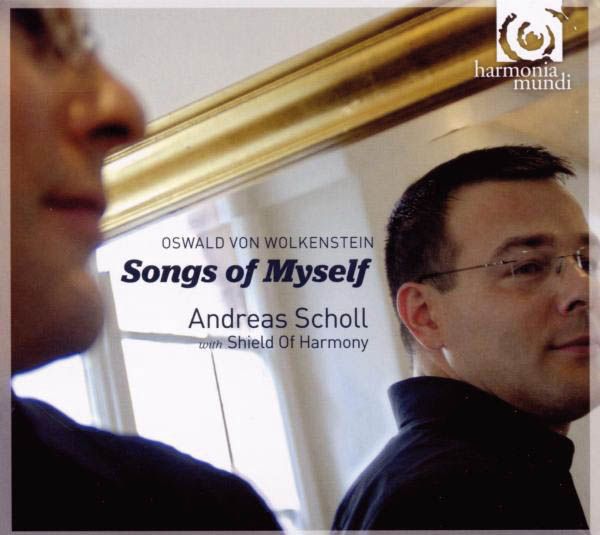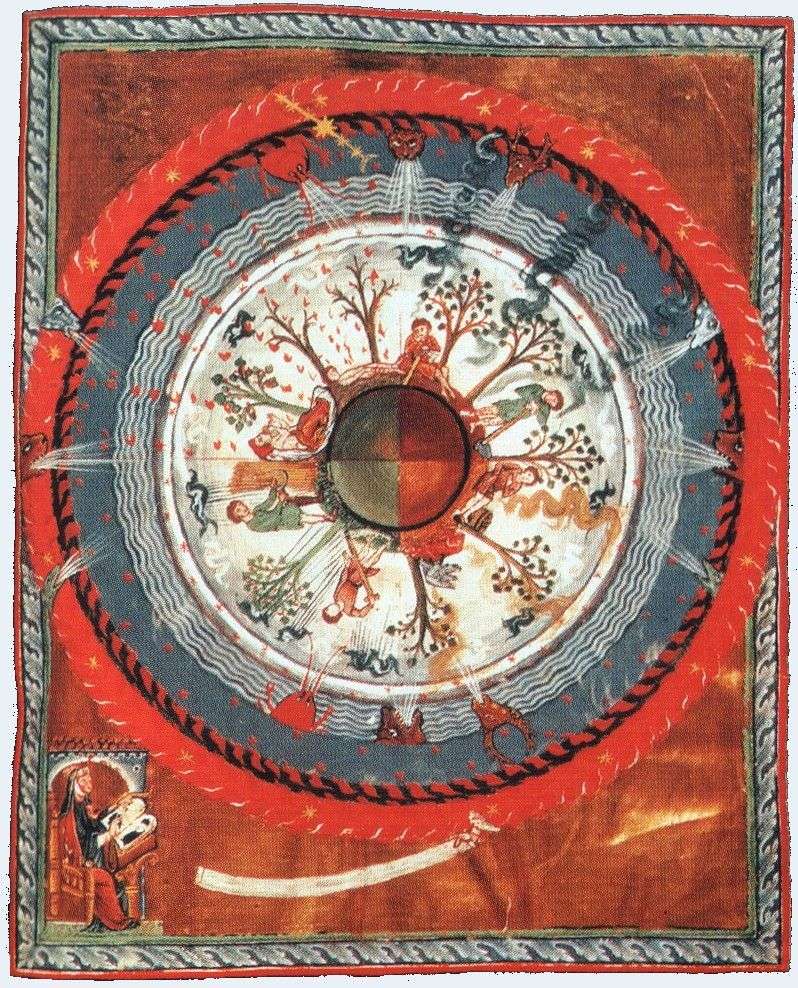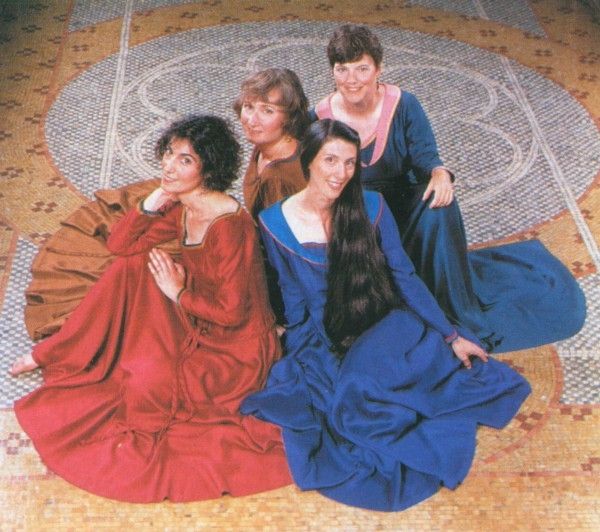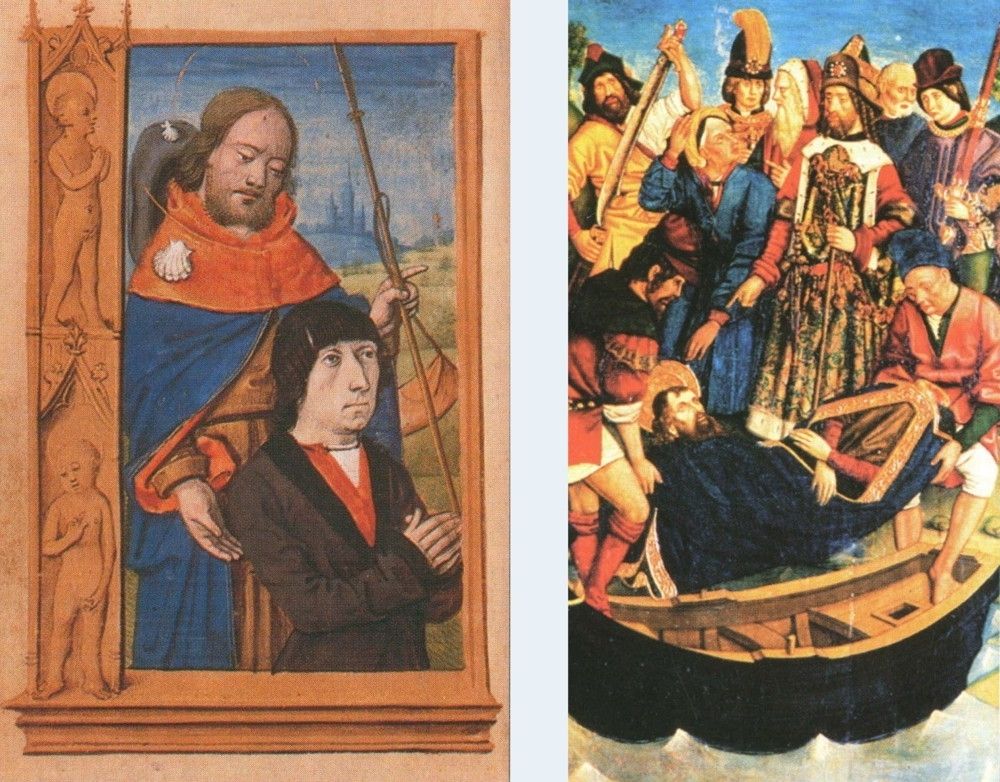
medieval.org
harmonia mundi HMC 902051
2010

medieval.org
harmonia mundi HMC 902051
2010
1. Es fügt sich (I, II, III) [6:33]
MS B, f. 7-8
2. Herz, müt, leib, sel [3:22]
MS B, f. 37
3. Parlamento (ANONYMOUS) [3:46]
London, British Library, MS Add. 29987, f. 61-61v
4. Frölich zartlich [3:06]
MS A, f. 32v-33
5. Di molen van pariis (Tenor/Contra: PIERRE DES MOLINS) [2:43]
Strasbourg, former Bibliothèque de la Ville, MS C.22 (formerly 222), no.49
6. Mi, mi, sol, fa (ANONYMOUS) [2:27]
München, Bayerische Staatsbibliothek, Codex lat. 7755, f. 279v-280
7. Grasselik lif [2:10]
MS B, f. 39
8. Bist grüßt maget reine (HEINRICH VON LAUFENBERG) [4:06]
Strasbourg, Biblioth. Cod. Joh. B. 121, fol. 96b
9. Durch Barbarei, Arabia [4:57]
MS B, f. 18V-19
10. Es fügt sich (IV, V) [4:34]
11. Ach, senliches leiden [3:37]
MS A, f. 20v-21
12. Des himels trone [4:42]
MS A, f. 34v-35
13. Nu rue mit sorgen [5:02]
MS A, f. 19
14. Mit ganzem willen wünsch ich dir (ANONYMOUS) [4:06]
Berlin, Staatsbibliothek zu Berlin, Preii8ischer Kulturbesitz, MS Mus. 40613, 72-73
15. Kom, liebster man [3:23]
MS B, f. 43
16. Jeloymors (Tenor: GILLES BINCHOIS) [3:22]
München, Bayerische Staatsbibliothek, Cim. 352b
17. Der mai mit lieber zal [3:24]
MS B, f. 21V-22
18. Vierhundert jar [2:07]
München, Bayerische Staatsbibliothek, Cim. 352b
19. Der oben swebt [4:58]
MS B, f. 13V-14V
20. Es fügt sich (VI, VII) [4:44]
21. Wes mich mein bühl [3:41]
MS B, f. 24
The main sources for the music of Oswald von Wolkenstein are so-called
"Manuscript A" (Vienna, Österreichische Nationalbibliothek, MS 2777) and
"Manuscript B" (Innsbruck, Universitatsbibliothek, 'Wolkenstein-Rodeneck Codex', without call number).
Translations: Crawford Young (1, 7, 9, 10, 11, 12, 20, 21)
© Albrecht Classen, The Poems of Oswald von Wolkenstein, (Palgraye Macmillan, New York 2008) (2, 4, 17, 13, 15, 19)
All
editions of Oswald's songs by Marc Lewon. A printed edition of the
songs will be published with ‘Verlag der Spielleute’ in 2010.
Kiedrich... ANDREAS SCHOLL
Oswald von Wolkenstein,
literally Oswald of the Castle in the Clouds, is one of the
best-documented enigmas in the history of western music. He looms larger
than life as a personality in the history of German literature, yet
outside of that context, this prolific poet-musician from south Tyrol
who lived six hundred years ago has remained relatively obscure in the
world of classical music. CRAWFORD YOUNG
Shield of Harmony
is a quartet of fifteenth-century music specialists. The ensemble's
name refers to the circular shield held by the allegorical maiden
Harmony (Musica), the Seventh Liberal Art as described by Martianus
Capella (c.420) in his Marriage of Philology and Mercury. From the shield's concentric rings emanates celestial music, the so-called ‘Music of the Spheres’.
Andreas Scholl, countertenor · baritone
Shield of Harmony
Crawford Young
Kathleen Dineen, soprano, harp
Marc Lewon, gittern, lute, vielle, nyckelharpa
Margit Obellacker, dulce melos
Crawford Young, lute, gittern
harmonia mundi s.a.
Enregistrement juin 2009, St ValentinusKirche, Kiedrich (D)
Direction artistique et prise de son: Markus Heiland, Tritonus
(C) harmonia mundi pour l'ensemble des textes et des traductions
Photo couverture: Eric Larrayadieu
Photos enregistrement: Lars Böhm, 2009
Illustrations: Innsbruck, Universitäts- und Landesbibl.,
Cod. ohne Sign (Wolkenstein-Handschrift B)
Arrangements: Shield of Harmony
Editions: Marc Lewon sauf plage 7: Margit Übellacker
et plages 4,13,15,17,19: Crawford Young
Language consultant: Marc Lewon
Vocal consultant: Richard Levitt
Maquette Atelier harmonia mundi
harmoniamundi.com
HMC 902051
Im
Juni 2009 stand ich im Chor der Kiedricher St. Valentinuskirche vor
meinem Mikrofon und sang mit meinen Freunden die Musik Oswald von
Wolkensteins. Oswald reiste den Rhein entlang Richtung Norden nach
Westfalen und erwähnt einige Stationen dieser Reise. In Bacharach, nicht
zu weit vom Rheingau entfernt, hat er unter anderem übernachtet. Ob er
in Kiedrich war, dessen Wallfahrtskirche zum heiligen Valentin damals
weit bekannt war, wissen wir nicht. Die Vorstellung jedoch ist eine sehr
schöne, da dieser Ort mir so viel bedeutet.
Am weissen Sonntag
1975, im Alter von sieben Jahren, zog ich zum ersten Mal mit den
Kiedricher Chorbuben zur festlichen Messe in dieses wunderbare
Gotteshaus ein. Generationen meiner Familie,väterlicher und
mütterlicherseits hatten bereits vor mir dieses “Sängeramt” bekleidet.
Sonntag für Sonntag habe ich dann bis zu meinem Studienbeginn in Basel
ein lateinisches Hochamt mitgestaltet und unter der Leitung unseres
Chorregenten gregorianischen Choral und mehrstimmige Chormusik gesungen.
Dieser
Choralgesang erklingt nach wie vor jeden Sonntag in seiner
einzigartigen Weise des “Mainzer Dialekts”; Kiedrich ist der einzige Ort
weltweit, an dem diese Form des Chorals noch heute gesungen wird.
Es
war ein unbeschreibliches Gefühl nach all den Jahren der Abwesenheit,
ich war insgesamt 20 Jahre in Basel geblieben, wieder an dem Ort zu
singen, an dem ich gemeinsam mit meinem Vater, meinem Bruder und meinen
beiden Schwestern sonntäglich stand um Gott mit unserem Gesang zu loben.
Meine jüngere Schwester Christine war 11 Jahre zuvor verstorben; damals
eines der wenigen “Chorbuben-Mädchen”. Meine Vater war fast genau zwei
Jahre vor unserer Aufnahme viel zu früh von uns gegangen.
Hier
war ich wahrhaftig “zuhause” und war mir bewusst, das diese Aufnahme
eine ganz besondere werden würde. In den Pausen habe ich mich dann auf
den Platz meines Vaters gesetzt und er hat durch mich
“hindurchgeblickt”; es konnte alles nur gut werden.
Ihm und meiner Schwester widme ich diese Aufnahme in grosser Dankbarkeit.

What sets Oswald apart from other
musicians and poets of the late Middle Ages? To begin with, he was both
prolific poet and composer of over 130 songs to a degree which suggests
his predecessor Guillaume de Machaut — who died just as Oswald was born —
and the troubadours before him. Like Machaut (and effectively no other
contemporary composer), he actively looked after his legacy, ensuring
that his works were preserved for posterity in sumptuous anthology form.
Unlike Machaut or virtually any other composer of the period, we know
exactly what Oswald looked like — his up-close, resolute one-eyed visage
has been reproduced innumerable times, making his the only
life-portrait ‘face’ of a medieval composer that we have. The face,
together with his written words, belongs to an articulate, earthy,
pious, lusty, sometimes violent knight-entertainer who cannot quite be
compared to anyone else.
And yet it is tempting to compare Oswald
with other figures. His main poetical themes have been described as
travel, God and sex (not necessarily in that order. ...), timeless
topics all, formulated by Oswald in a manner which is half-way between
conventional late Gothic courtly-love and early stream-of-consciousness
poetry. He celebrates himself, unconditionally and unexpurgated, like
the nineteenth-century New York poet Walt Whitman. Or like Jack Kerouac,
the Romance of the Road is his creed, and he makes it clear that, as a
father with seven children, family life is not for him.
Oswald
was a passionate traveller. His song texts provide an astonishing amount
of information about his biography, as in, for example Es fügt sich
which describes him leaving home at age ten and travelling to Crete,
Prussia, Lithuania, Tartary, Turkey over the sea, France, Lombardy,
Spain. The catalogue of countries visited throughout his texts reads
like a medieval encyclopaedia of geography; while he may well actually
have gone to these places, including Egypt, more important perhaps is
the self-image which is presented through the texts — the
knight-crusader always ready for a new adventure. His journeys seem
mainly to have happened in the service of King Rupert, Duke Friedrich IV
and especially King Sigismund, or as a presumed knight's squire when he
left home as a boy.
Oswald was also a passionate singer ... but
he remains something of a musical enigma. While his identity as a poet
is well established, as a musician he is elusive. There is no way of
knowing what range his singing voice actually had, pitch notation in his
period being relative and not absolute. His musical literacy may have
been quite limited — perhaps he had a good memory for melody but was
unable to read mensural or rhythmicised notation fluently.
A
majority of his pieces are monophonic works and show a connection with
the tradition of Minnesang and singers such as Frauenlob and Regenbogen.
The extent to which he himself composed these melodies is unclear. The
smaller group of polyphonic works is made up largely of arrangements of
borrowed compositions from French composers like Fontaine and Binchois,
into which Wolkenstein placed his own text. He was in contact with
international musical fashion and trends, at least from high-level
social occasions which were such a routine part of his travels as a
diplomat and retinue member. Oswald visited the Church Councils in
Constance and Basel during the periods 1414-18 and 1432-33, and trips
like these were golden opportunities to hear, learn or otherwise obtain
copies of internationally-circulating courtly chansons. French pieces
Wolkenstein likely heard during his visits to Constance (1415, 1417) and
England, France and Spain with Sigismund (1416) were the anonymous
rondeau En tes doulz flanz (Fröhlich zärtlich) and Jean Vaillant's Par maintes foys (Der mai mit lieber zal). This recording has two further pieces which plausibly might be associated with these years — Grasselik lif, a possible candidate for an unidentified or lost French song, and the widely circulated Amis tout dous
of Pierre des Molins (a Parisian contemporary of Vaillant), which
Wolkenstein did not set as far as we know, but which would have fitted
quite well in this group of works.
The ‘original’ polyphonic
songs of Oswald are a bit tricky to categorise in terms of musical
style. Some or all of these musical compositions may have been made by
someone else, although there is no direct evidence to show that
Wolkenstein did not compose them. The May-song Des himels trone
likely provides an example of what Oswald called in one of his songs
‘quientieren’ (literally ‘singing in fifths’;
in Kl 21 Ir alten weib).
It features two-part note-against-note counterpoint with many perfect
consonances (unison, fifth, octave), and a few dissonances and parallel
perfect fifths, clearly forbidden in mainstream fifteenth-century music
theory. This style could be what Oswald's term ‘quientieren’ (verb form
of the German term ‘Quinte’, i.e. the interval of the perfect fifth) is
referring to, and it might reflect a local music tradition, for example,
of the Augustine monastery at Neustift near Brixen, where Oswald
commissioned his song anthologies to be copied. Looking closer, the two
voices share the same range, cross frequently, and the upper voice moves
over wide intervals not usually found in note-against-note contrapunctus simplex of music theorists and famous composers of the day.
But
just these are the salient features of a group of two-part French songs
from around 1415-25 that Oswald ‘contrafacted’, meaning he borrowed a
pre-existing composition and inserted his new text. One such work is Kom liebster man, using the music of an anonymous French rondeau called Venés oir vrais amoureus. It is intriguing to imagine that Des himels trone
is a ‘quientiertes Lied’ of Oswald which he reworked from its original
monophonic form (preserved as such in one of the two manuscripts
containing his songs), emulating the equal-voice French style as ‘der
franzoisch hoflich discantieret’ (‘a French court singer makes a new
voice upon a given melody’) in Oswald's own words, but done in his more
parochial manner. A similar treatment is found in Ach senliches leiden.
Here the ‘quientieren’ may have been added below the upper
melody, with its tenor-style cadences, but in contrast to Des himels trone, where the tenor part carries the text, both voices are texted. Hence Ach senliches leiden may have been conceived as a two-voice piece from the beginning.
A second kind of Oswaldian polyphony is found in Nu rue mit sorgen, a canon or fuga
as he called it in four other similar works. As with the two works
mentioned above, there is a certain lack of conformity to the rules of
counterpoint found in his borrowed French works, which gives the
impression that music theory was not one of his interests. The charm of
this and similar songs is as compelling for us as it must have to Oswald
and his contemporaries.
One such contemporary would have been Heinrich Laufenberg, composer of the devotional monophonic song Bis gruesst maget reine,
the only vocal piece on the recording not attributed to Oswald (but
stylistically close to him). Laufenberg, active in the Upper Rhine
region, may be the same composer as ‘Henricus de libero castro’ in a
manuscript formerly in Strasbourg containing selected French works
mentioned above (see list of manuscripts).
Music notation
during this period is essentially non-specific in terms of performance
instructions, including which instrument (or type of voice) should be
used. Our interpretation features string instruments, to accompany the
voice and to play instrumentally. This is suggested by Oswald's use of
words like ‘saitenspil’ (music on stringed instruments) and ‘fidel’ or
‘fidlen’ (fiddle, vielle, viola) in his song texts — he clearly
liked bowed instruments. Also heard here is a Gothic harp built after
the so-called ‘Wolkenstein-Harfe’ in the instrument collection of the
Wartburg in Eisenach. Traditionally thought to have been owned by
Wolkenstein himself, it is very likely from a later period in the
fifteenth century, although it may have been made in Tyrol. (Oswald
stated in Es fügt sich that he could play fiddle, trumpet,
drums and flute. He does not mention harp, but such a passage may of
course be an example of poetic licence.) Contemporary with the last
period of Wolkenstein's life is the ‘dulce melos’, a type of hammered
dulcimer. The instrument heard in the recording and featured in Mi mi fa sol
was reconstructed after a set of constructional drawings (c.1440) by
Henri Arnaut de Zwolle, who worked at the court of Burgundy. Paulus
Paulirinus, a music theorist from Prague who studied in northern Italy,
names the dulce melos as his favourite instrument in 1460, and it
remains to this day a favourite of music lovers in certain Alpine
regions. Wolkenstein would also have been very familiar with the sound
of the lute and the small lute or ‘quinterne’, ubiquitous throughout
Europe at this time. Like ‘quientieren’, the term ‘quinterne’ comes from
‘fifth’, not necessarily because it played accompaniments as in Des himels trone,
although it easily could have, but rather on account of its tuning a
fourth or fifth higher than its close relative the lute. This instrument
is featured on an instrumental version of Gilles Binchois's Je loe amours, a French ballade Wolkenstein chose to make a contrafactum upon, Mir dringet zwinget fraw dein güt. An Italian ‘istanpita’ (exemplified by Parlamento) was a type of music for entertainment at feasts, to enjoy in between courses, for example, whereas the tenor melody of Vierhundert jar, a contrafactum of A son plaisir by Pierre Fontaine, is handled in this recording as a typical social dance or bassadanza.

Ensemble director Crawford Young
graduated from New England Conservatory in Boston in 1976. He studied
medieval music with Thomas Binkley at Stanford University prior to
joining the medieval quartet Sequentia in Cologne in 1978. Young was a
founder member of two prominent medieval ensembles, Boston-based Project
Ars Nova and the Ferrara Ensemble of Basel, which under his direction
in 1996 both won a Diapason d'Or de l'Année and was a finalist for Gramophone's
Early Music Recording of the Year. Since 1982 he has taught the lute
and medieval music at the Schola Cantorum in Basel, has given courses at
conservatories and universities in Europe, North America and Australia,
and has published research articles and a facsimile edition of early
lute manuscripts. As lutenist and guitarist Young has accompanied
Andreas Scholl since 2004.
Kathleen Dineen, who comes from
Co. Cork., Ireland, was awarded the Irish Arts Council Bursary Award to
study voice with Richard Levitt and Dominique Vellard at the Schola
Cantorum, where she currently teaches medieval singing. In addition to
being a guest teacher at CEMPR at the University of Birmingham, she has
sung with many ensembles including the Clerkes of Oxenford (London),
Sequentia, and the Ferrara Ensemble, and since 2001 has directed the a cappella
trio White Raven, with which she has recorded two CDs. She has been
musical director for a number of productions including the medieval
Easter play from Tours in 2004 and A Celtic Voyage in
collaboration with Ouroborus Theatre Ireland in 2008. She has made many
appearances in concert series and festivals throughout Europe, and has
been featured on numerous radio broadcasts in the USA, Australia, and
Europe.
Margit Übellacker studied the dulcimer with
Karl-Heinz Schickhaus at the Bruckner Konservatorium in Linz and Birgit
Stolzenburg-De Biasio at the Richard Strauss Konservatorium in Munich,
before going on to study with Crawford Young at the Schola Cantorum
Basiliensis (Diplom für Alte Musik 2004). As an interpreter of early
music she has performed in Europe, South America, Asia, Australia, and
the USA, and has taken part in radio and CD recordings with groups such
as L'Arpeggiata, Musica Fiorita, Il Suonar Parlante, Concilium Musicum
Wien, the Australian Brandenburg Orchestra, the Orchestre Philharmonique
de Radio France, and L'Orfeo Barockorchester, as well as with Crawford
Young, Aline Zylberajch (fortepiano), and her own ensembles Dulce Melos
and La Gioia Armonica.
Marc Lewon specialises in medieval
strings and medieval Germanic languages and literature. After gaining a
Master's degree in musicology and medieval German from Heidelberg
University, he moved to Basel to further his practical music studies in
the Medieval Department of the Schola Cantorum. There he studied lute
with Crawford Young, vielle with Randall Cook, and singing with Kathleen
Dineen. In 2006 he completed his diploma in medieval lute, graduating
with honours. He plays regularly with a number of ensembles including
Dulce Melos, Les Flamboyants, and Le Basile, and is head of the project
ensemble ‘Leones’. Besides being a busy performer, he gives courses in
medieval music and publishes articles and editions on the subject. Since
2008 he has directed the course of studies in medieval music at Burg
Fürsteneck in Germany.